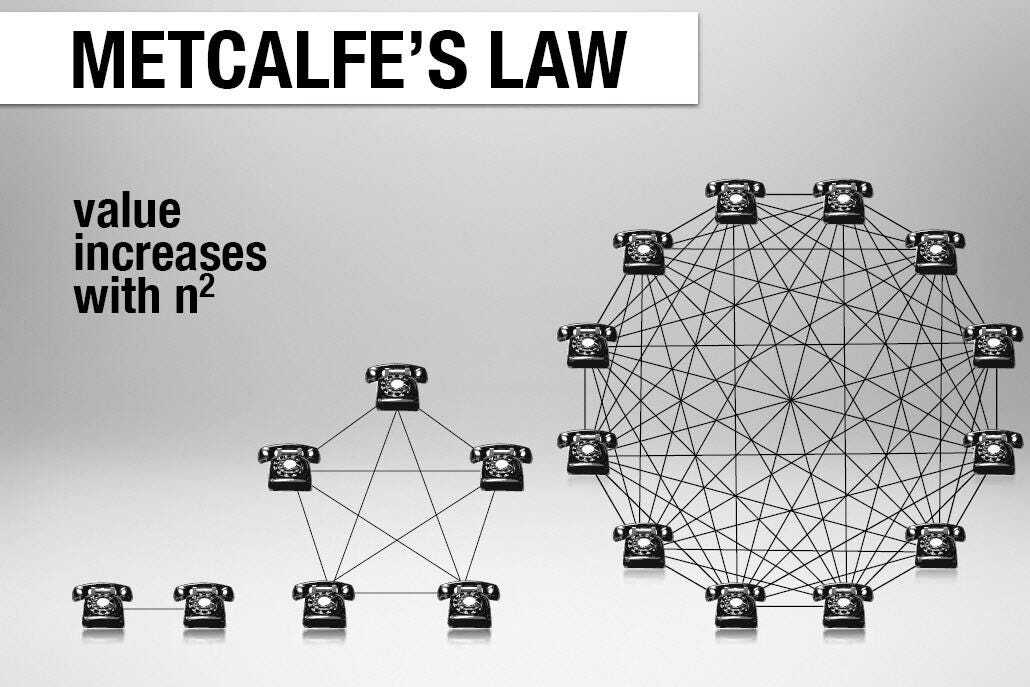Introduction
In the realm of decision-making, understanding the dynamics of network effects is crucial. One mental model that sheds light on this phenomenon is Metcalfe’s Law. Coined by Robert Metcalfe, the law states that the value of a network is proportional to the square of the number of its users. In simpler terms, the more people connected to a network, the more valuable it becomes.
Relevance of Metcalfe’s Law in Decision-Making
Metcalfe’s Law holds significant relevance in decision-making processes, particularly in the digital age where networks and connections play a vital role in various aspects of our lives. Whether it’s personal decisions, business strategies, or public policies, understanding the impact of network effects can help individuals and organizations make informed choices.
Anchoring in Human Psychology and Prevalence
Metcalfe’s Law is deeply anchored in human psychology. Humans are social creatures, and we often rely on social validation and peer influence when making decisions. We tend to place higher value on products, services, or platforms that are widely adopted and used by others. This psychological bias amplifies the effect of network effects and contributes to the prevalence of Metcalfe’s Law in our day-to-day lives.
Examples of Metcalfe’s Law in Various Contexts
- Personal Life Decisions: Imagine you are deciding between two social media platforms. Platform A has a large user base, while Platform B is relatively new and has fewer users. Due to Metcalfe’s Law, Platform A may appear more attractive because of its established network. As a result, you may choose Platform A, even if Platform B offers unique features that align better with your preferences.
- Business Scenarios: In the business world, the power of Metcalfe’s Law can be observed in the adoption of communication tools. For instance, consider the case of messaging apps. A popular messaging app with a large user base becomes more valuable because it allows users to connect with a larger network of people. This network effect often leads to a dominance of one or a few major players in the market, making it challenging for new entrants to compete.
- Public Policy-Making: Metcalfe’s Law also has implications for public policy decisions. For example, in the context of transportation infrastructure, the construction of new roads or public transportation systems may be influenced by the network effect. Decision-makers may prioritize areas with a higher population density and existing transportation networks, disregarding the needs of less connected or remote regions.
Mental Biases and Psychological Underpinnings
Several mental biases contribute to the prevalence of Metcalfe’s Law. One such bias is social proof, where individuals look to others to determine the value or quality of something. Additionally, the availability heuristic plays a role, as we tend to rely on easily accessible information or well-known networks rather than exploring alternative options. These biases can lead to a herd mentality and reinforce the network effect, further influencing decision-making.
Identifying and Avoiding the Pitfalls of Metcalfe’s Law
- Recognize the network effect bias: Be aware of the tendency to favor established networks and question whether their size alone truly reflects their value. Evaluate alternatives objectively, considering their unique features and potential benefits.
- Seek diverse perspectives: Actively seek out opinions and viewpoints from individuals outside of your immediate network. Engaging with diverse perspectives can broaden your understanding and help overcome the narrow influence of the network effect.
- Conduct thorough research: Take the time to explore different options, especially those that may be less popular or have smaller networks. Investigate their features, benefits, and potential for growth. Consider long-term potential rather than solely relying on the current network size.
Implications and Value of Awareness
Understanding Metcalfe’s Law and its influence on decision-making can empower individuals and organizations to make more informed choices. By recognizing the biases associated with network effects, we can avoid the trap of blindly following popular trends and instead make decisions based on a comprehensive evaluation of the available options.
Conclusion
Metcalfe’s Law serves as a powerful mental model that highlights the influence of network effects in decision-making. It underscores the value and challenges associated with networks and their impact on our choices. By being aware of the psychological biases and strategies to mitigate their effects, we can navigate the pitfalls of Metcalfe’s Law and make decisions that align with our best interests and long-term goals.
